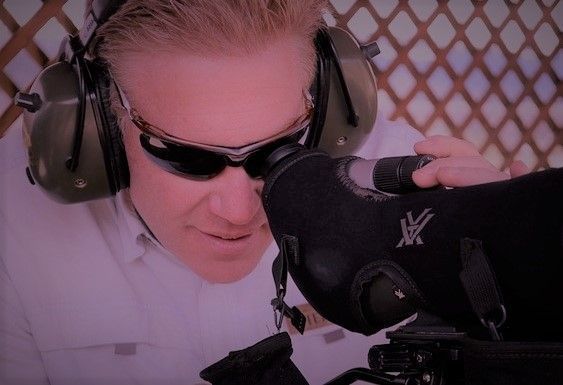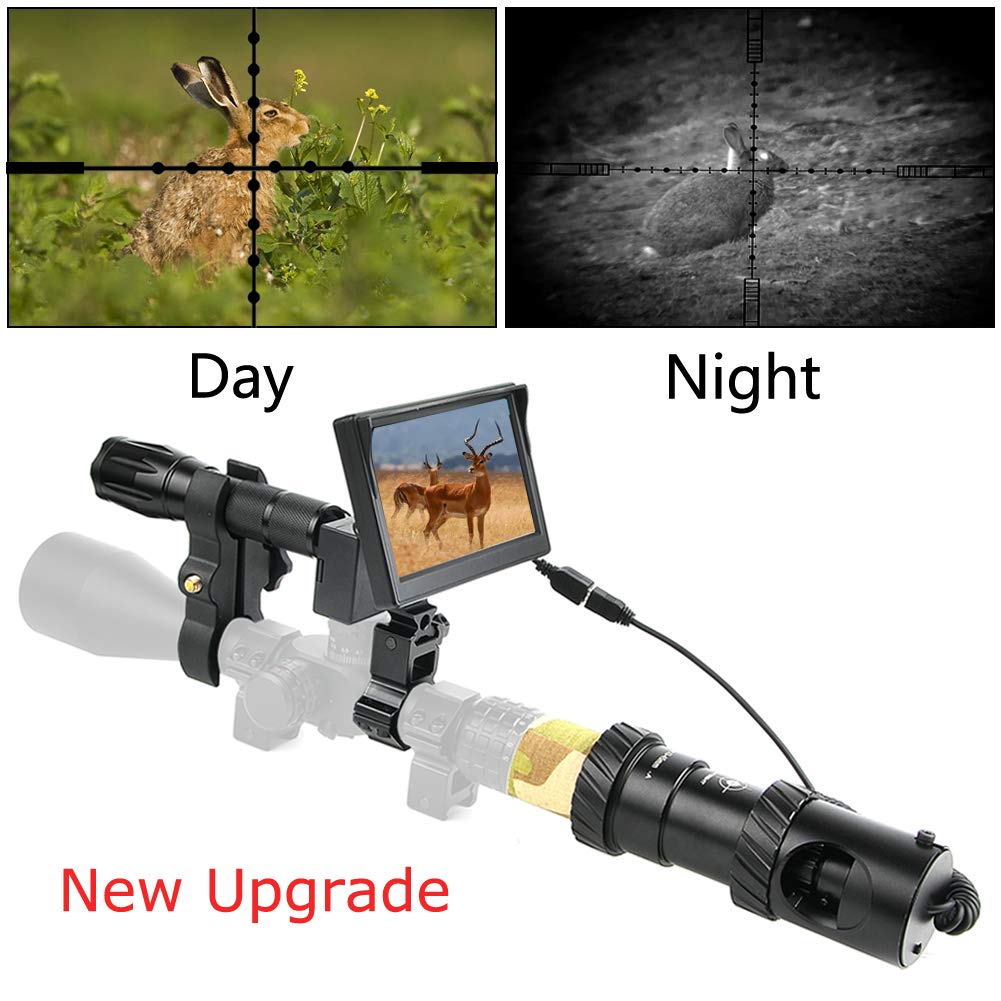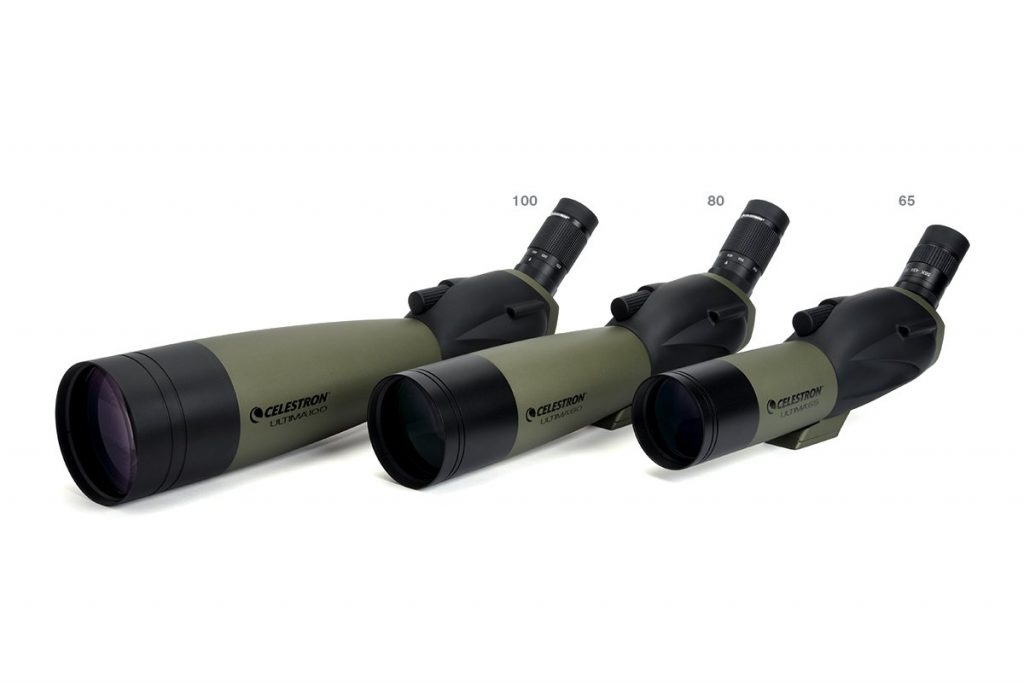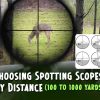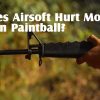A spotting scope is a kind of portable high-power telescope, especially for day-time use, which is smaller in size with added optics to present an erect image. In contrast, a telescope produces a reversed image or even an upside-down image.
A spotting scope is equipped with lower magnification instruments than a telescope. As well as, a spotting scope could be mounted on an ordinary photo tripod, but it requires a very specialized mount for using a telescope for astronomical purposes.
Besides that, spotting scopes provide higher magnification and better quality image, whereas most binoculars provide relatively low magnification. This is why Spotting scopes are far more accurate at long distances than binoculars.
How Does A Spotting Scope Works?
I’ve already mentioned that airsoft spotting scopes are similar to telescopes but smaller in size. You’ll find that most of the spotting scopes are labeled with three numbers, where the first two numbers represent the magnification range and the last number represents the size of the front lens as always.
As an example, for a 15-50×60 Spotting scope model, you’ll get the scope with a zoom magnification range of 15-50x and the front lens (objective lens) of 60mm diameter. You can manually adjust the magnification when viewing – just like a camera.
When To Use a Spotting Scope?
You can use a Spotting scope anytime when you need more magnification rather than binoculars.
Spotting scopes are mainly used for birding, surveillance, hunting, viewing landscapes, wildlife, ships in the ocean, glassing and other distant objects.
Besides that, spotting scopes are also used for scoring targets on rifles, pistol and archery ranges, and even sometimes for astronomical purposes, as well as also used to take long-distance pictures with a variety of cameras.
How Far Can You See With A Spotting Scope?
Using a spotting scope, it’s easy to view target objects that even the best binoculars can’t detect, that’s why spotting scopes are ideal for hunting, bird watching, target shooting, or general sightseeing.
For the Birdwatchers/ornithologists, these tools extremely useful because spotting scopes allow them to view crystal clear images of birds perched on nests from over great distances.
Also, military and police marksmen and snipers use this device for their training in target shooting.
The simplest and most basic spotting scope can allow you to see up to 100 yards, while the rest allow viewing over 100, 300, 400, 500, and over 1000 yards, respectively.
Here is the Distance Overview: How Far Can You See with a Spotting Scope?
How To Use Spotting Scope ?
Using spotting scope isn’t so tough to learn, within a few minutes you can learn all the most important things to use a spotting scope like a pro for any purposes including birding, surveillance, hunting, viewing landscapes, ships/boat in the ocean, and wildlife.
Below are the tips that will help you to get the most out of the time you are spending behind your spotting scope.
Pick The Perfect Spot
When you’re ready to set up your spotting scope for coyote hunting, first of all, you need to find the ideal spot throughout the terrain. Find out a flat surface or similar to that, because using a spotting scope means to hold a position and place for a long time, so the area should be comfortable for you to lay down or sit down while you focus on the target. Moreover, it also helps you to get stability for the scope when you set it up.
Setting Up Your Scope
Once the spot is fixed then you can set up your spotting scope. At first, make sure to adjust all the legs and put the scope in a position that is the most comfortable for you to use. You know, it’s going to be a long run, so don’t be rush, take some time to adjust all the settings slowly.
Here, below the steps, you can follow to get the best result as usual.
Mounting On Tripod
Take Time and Find The Target
![]() Now, probably, you’ve got the scope set up at your comfortable position. So, you can scan the area now with your binoculars.
Now, probably, you’ve got the scope set up at your comfortable position. So, you can scan the area now with your binoculars.
What? You may ask yourself, I’ve just set up my Spotting scope and now you’re telling me to use my binoculars, is it a joke?
No, no, obviously it’s not.
Actually, it’s easy to quickly scan the whole area for animals to identify the animal or animals that you want to observe before shooting. Once you’ve got your target, then move your spotting scope towards them.
But, at first, make sure that your scope is zoomed out all the way when you’re positioning it in its general direction to get the largest field of view. This will make it easier for you to find the exact position that you want to be in, and once you’ve located your target, then center that in your field of view and then begin slowly zooming in with the focus wheel.
Overcome Heat Waves
Heatwaves are one of a kind that may disturb your vision through the spotting scope.
Although you can beat the heat by zooming out, this prevents the distortion almost entirely. Don’t forget that the more you have zoomed in on your target, the more the heat waves will impact the field of vision. After zooming out, you can zoom in slowly until you still have a bright look at the targeted animal but without the annoying heat waves.
Sometime you may get helped from passing clouds while you’re targeting because clouds instantly reduce heatwaves and give you a chance to zoom back in on the animal as close as you wanted to be.
You can try a US military using the Spotting Scope video.
Choosing The Right Spotting Scope
While you’re going to get the best spotting scope , there are some key points you should consider carefully. This will help you to choose the perfect spotting scope depending on for what purpose you’re going to get it.
Spotting Scope Magnification :
First of all, it’s magnification, the most vital matter to think about. The magnification of spotting scopes begin where conventional binoculars stop, and the magnification capacity varies from one spotting scope to another.
The most spotting scopes have a variable of zoom-in capacity, such as 15-45x or 20-60x. This means you can manually adjust their magnification when viewing, just like a camera.
In general, the maximum magnification range is 15x to 60x, whereas the higher the range is, the more detail and clear view you’ll get, and it’s well-known that spotting scopes are always great to view birds, wildlife, scenery and other objects that are well beyond the range of a conventional binocular.
However, two things determine how much magnification you can use in a spotting scope — the first one is weather and the second one is the optical lenses.
Spotting Weather Condition :
Magnification through a spotting scope to get a clear vision may vary with the weather condition. Like heat waves, humidity, dust, glare, wind and air currents during the day all reduce image quality. The more you zoom in, the more drastic the reduction in image quality you’ll get.
This time adjusting to 30° can be disastrous; henceforth, you will require to put it lower. On the other hand, when the weather is calm, you can use 60x to good advantage, and it’s easy to adjust to different resolutions for a better view anytime with its adjustable techniques.
Optical Lenses System
Optical Lenses System
The optical system of a spotting scope is another factor in magnification. As usual, there will always be some drop off in image quality as magnification goes up, which is determined primarily on the quality of the optical system.
Regardless of size or type, it’s natural that you’ll lose image quality quickly as magnification goes up. But, if you want a spotting scope that loses very little in image quality, even at the highest magnification, whereas the image is as sharp at 60x as it is at 20x.
You’ve to be prepared to pay a hefty amount rather than general because only a few handful spotting scopes are capable of this, and they are costly.
However, the magnification around 30x-40x is more than enough for most applications as usual.
Objective Lenses
The front lens of a spotting scope is called an objective lens, which comes in different sizes. The larger this lens will be, the more detail and better you’ll be able to see, especially at higher magnifications.
However, it’s not only the size when looking at the objective lens to work with. It’s essential to consider the quality at the same time. So, go actually for quality, not size.
Although, fortunately, there are ways to improve the performance of any spotting scope using unique quality glass such as ED glass, APO glass, HD glass, Fluorite glass in the objective. However, this option will cost you a little more, but there is no doubt that it’ll deliver better quality images rather than a larger objective made of standard glass.
Lens Coating
Lens coating is another feature that improves light transmission, and somehow it’s important in a high magnification instrument when it’s about getting the best.
There are different types of coated lenses you will find like “fully coated,” “multi-coated,” “fully multi-coated,” whereas, all premium grade models are fully multi-coated.
Water Proofing
However, waterproofing isn’t a necessity, but it’s a great added advantage, I think when it comes to protecting your spotting scope from moisture and water, as well as from dust and dirt. Admittedly, this will ensure that it serves you for a long time in all types of environments.
Considerable Weight
The weight of a spotting scope isn’t a significant factor while choosing an enormous spotting scope, but might be an important consideration depending on your usage. This is why you should carefully consider the weight based on how and where you intend to use the spotting scope.
Like, if you are a hunter, then you should go for a lighter spotting scope. On the other hand, if you intend to fix it on a given spot for a long time, mounting it with a tripod, then even a more massive model should be ok.
Angled or Straight Spotting Scope
Lastly, the thing that you need to determine which model of Spotting scope you need. In general, there are two original designs available for viewing through a spotting scope: the angled eyepiece or a straight one.
The spotting scope with angled eyepiece requires the user to look down into the eyepiece; on the other hand, the straight one requires you to look straight ahead simply.
Here, below are some of the key points depending on different purposes that you may consider before purchasing a spotting scope.
The most bird watchers and sky gazers seem to prefer the angled eyepiece because of:
- The angled eyepiece allows the user to more easily aim upwards
- As well as, it also makes sharing the scope easier because you don’t need to repeatedly adjust the scope’s position as per the height of the user.
- Also, you can use your scope for long periods with a more comfortable position.
And, there are some other reasons when a straight spotting scope will be better for you.
Like, when you are going for hunting, a straight scope is far more appropriate than an angled one. Also, the straight scope allows you to maintain your position and keep yourself hidden more efficiently than an angled scope.

